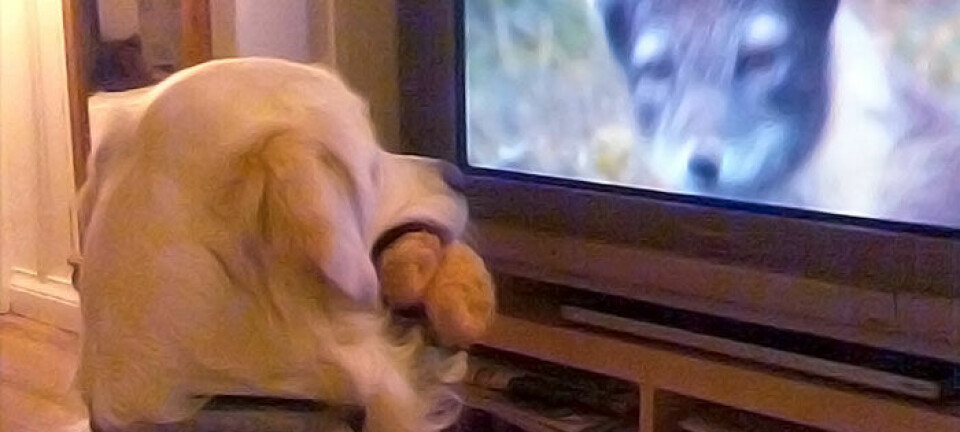
Dogs and cats are big business in Sweden
Just how many jobs do pets — and their loving owners — actually create? Swedish researchers have now provided some numbers to answer that exact question.
Plenty of research details both the positive and negative effects of being a pet owner, but little research has examined the economic effects that Fido and Kitty have on the economy. Six researchers at the Swedish University of Agricultural Sciences took note of this paucity of data and undertook a comprehensive look at just how many jobs dogs and cats create in Sweden.
“We know that this is a growth sector, and that it’s not only a Swedish phenomenon but an international trend. We thought our research could fill a gap," said Ruben Hoffman, one of the authors of the study.
He notes that the value of pets cannot be measured in kroner alone, because many pet owners see their dogs and cats as family members. Nevertheless, their existence also contributes to the economy.
“Dogs and cats have a direct impact on the economy through the economic activity created by the needs of the animals, animal owners and other people. This economic activity affects turnover, tax revenue, employment and contributes to the gross domestic product,” the researchers wrote.
Spending on pets on the increase
Every year, we spend more and more money on our pets. When the researchers looked at spending on pets beginning in the 1990s, they found a clear uptick in spending each year. And the sums that were spent were not inconsiderable.
Swedes spent SEK 4.5 billion on food, equipment, veterinary expenses and other services for their pets in 2001. In 2007, they spent SEK 8 billion. In 2015 that number had doubled to SEK 16 billion.
"I think the reason we spend so much on pets is because we are so close to our animals. And it’s not just people who are well off who spend a lot of money on their animals," Hoffmann said.
"For some people, it would be just as absurd to ask how much you are willing to pay for the health of your dog, as it would be to ask how much you are willing to spend on the health of your child,” he said. “There is more veterinary care that can be offered to animals today, and more people are willing to pay for these services.”
Hoffmann says that Swedes are not just spending more on pets than ever before, but they’re also spending more money on leisure activities in general.
"In Sweden, most people have been much better off financially over the last 15 years. Looking at the number of foreign holidays today compared to 30 years ago, I believe there is also a significant increase in money spent on travel,” he said.
Eight thousand jobs
The researchers looked at the kinds of jobs that are created because of dogs and cats, and calculated how many people are at work because of our four-legged friends. And that number? Eight thousand.
"That figure is an estimate of the number of full-time equivalents,” Hoffman said. “Many more people work part-time with jobs that are dog- or cat-related, but not full-time.”
To put this into perspective, that’s more than the number of people employed in air transport or rental and leasing operations in Norway, and about the same number as work in Norwegian libraries, museums or cultural activities, according to Statistics Norway figures.
Most of these employees work in veterinary services, which in Sweden accounts for 2600-2700 employees who mainly work with small animals. Dogs account for 70 per cent of this employment, while cats account for 28 per cent.
But the treatment of small animals doesn’t stop there. The researchers found around 400 masseurs, naprapaths and animal psychologists who work with pets in Sweden. This is a doubling since 2011, when about 200 people worked in these fields. Some races also need their coats groomed, which results in the employment of about 550 dog groomers in Sweden.
People also breed different cat and dog types, which can generate significant income. For example, based on the number of newly registered cat breeds and with an average price of SEK 7000 per cat, Swedish cat breeds are estimated to have generated up to SEK 70 million in sales in 2015.
Other businesses related to the dog and cat industry include insurance, dog training, kennels and doggie daycare, which offers care for your pet while you are at work.
A small but growing sector
The researchers from the Swedish University of Agricultural Sciences also calculated how much cats and dogs contribute to the national economy and came up with SEK 7 billion of gross domestic product.
“We estimated that this roughly a contribution of about 0.2 percent of GDP. Even though this represents a small part of the economy, I would say it is an important contribution. We also know that it is growing,” says Hoffman.
-------------------------------------
Read the Norwegian version of this article at forskning.no.






